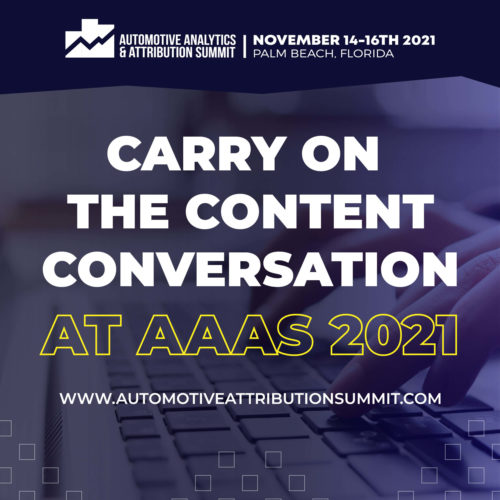At this year’s Digital Marketing Strategies Conference (DMSC), James Rothwell, VP of Marketing at Comcast, took the stage to explain the journey from content to audience.
Content is vital to your business’ success, and it will remain that way for years to come, but it won’t make any difference if your content isn’t reaching its audience.
While James’ keynote speech was centered around how television content reaches its audience, we here at PCG Digital are concerned with how the content on your website reaches its audience online, and why your dealerships’ success depends on it.
How Does Content Reach Its Audience Online?
As mentioned in a previous PCG blog post, content is the unsung hero of your businesses’ success. Content attracts potential customers and encourages engagement with your brand. That engagement can lead to sales. And that’s the goal here, right?
But, how does the content on your website reach its audience and ultimately generate a sale? This is where we see SEO and content marketing become best friends. Search Engine Marketing, or SEO, is defined as a digital marketing strategy used to increase the visibility of a website in search engine results pages. How does this affect content? When writing content, it is important to keep users, and SEO best practices, in mind. How can we get search engines to read this content and match it to search terms that potential customers are searching with?
Content can be amplified with the use of SEO elements.
Writing to appease users and search engines alike requires keyword research and the strategic placement of those keywords into your content body, headers, URL, metadata, etc. Additionally, how you format the content matters, as does linking, the use of multimedia elements, and call-to-actions.
Regardless of the topic, always write for people first, search engines second. Google serves up the best results for the search, so be the best. Use content to help customers along the buyer’s journey. Start by identifying keywords that match the products and services you offer, then get writing.
For example:
Say you are writing a piece of content, a 2021 Nissan Rogue trim comparison for a dealership in El Paso, TX. Ensure that all combinations of those words, “2021 Nissan Rogue,” “2021 Nissan Rogue trim comparison,” “El Paso, TX,” and more are included within the page or blog post. But make sure they are incorporated naturally. This way, if a buyer within the El Paso area searches “2021 Nissan Rogue trims” or something along those lines search engines can read your content, identify your keywords as they match the search term, and serve it up in search results.
To learn more about content, SEO, or any other digital marketing strategies and services, contact PCG! We are happy to share some wisdom with you and help your business grow.

Samantha Murray


Drive Your Meta Advertising Strategy Using Conversational Commerce


